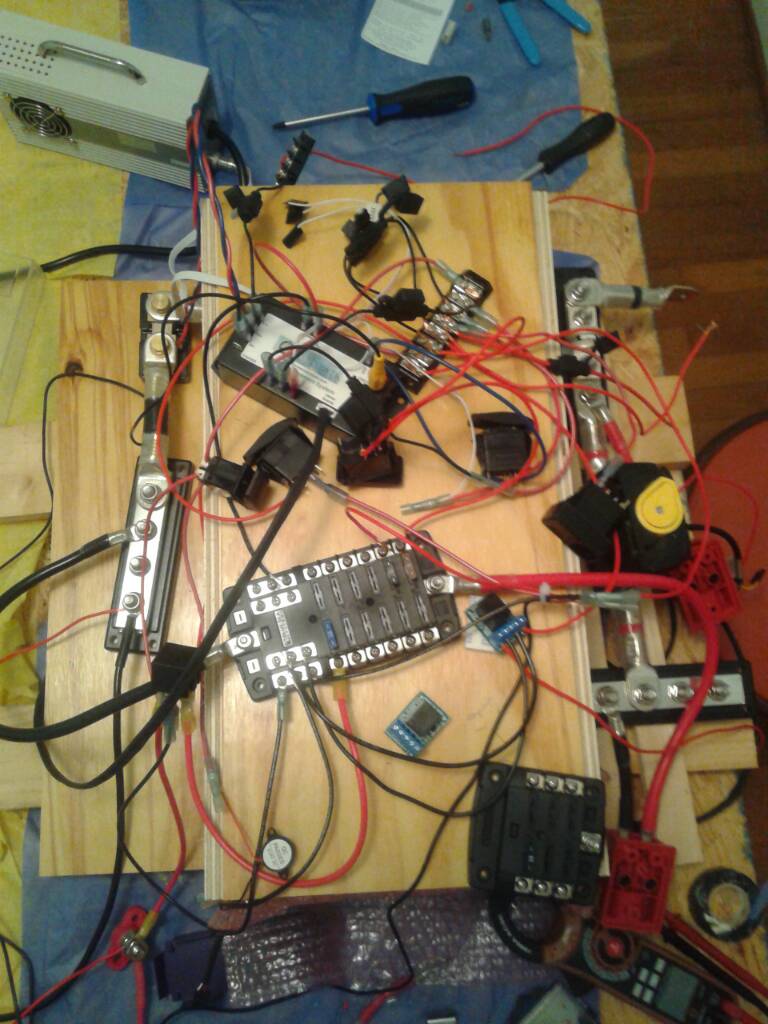HI all. I have been a bit sick but decided to plan the design of my electrical system. THis is a 200AH LIFEPO4 based system, but please get back to me with any feedback / improvement suggestions you may have.
Please help and tear apart my design!!!!!
I decided to buy elite power solution's
200AH battery + BMS system and am just planning the main system. I will later buy a 3000 watt victron inverter / charger. but for now i will bear with the 15A charger provided. I have not yet used / tested the battery. The package included a charger, a video screen for monitoring SoC, BMS, the battery, and a shunt. (all of them shown in the diagram below).
Contrary to many opinions that i've seen, I decided to go with a latching relay for switching the main loads (
BLue sea 7700, 500 amp) , and will be controlled by relays and the BMS. THis latching relay can be manually switched without power, saving me the need to buy a switch.
My installation is somehow inspired on the
mar azul boat blog, and i slightly modified the relays to control the under voltage. There are also very
helpful manuals that were provided by elite power solutions, and of course learned some from this forum.
The below diagram is a reduced version that omits some components of the BMS package (FUSES, Ground connections, video screen, and others), hoping to give a good understanding for controlling Under VOltage and Over Voltage Conditions:

THe BMS has ( Black biggest central component) , among other, these outputs:
- OV : Over voltage, +12V normally, GND if any cell >3.6V
- UV : Under voltage , +12V normally, GND if any cell <2.5V
(note) both OV and UV go to GND for other errors like over temperature or BMS sensing failure
For OV control, it is directly connected to the sense cables of the charger, and i am adding a buzzer ( utilizing a
relay on the right side), so I can hear when there's an OV condition. This should make the charger stop charging in an OV event.
For UV control, i decided to connect two relays ( to the left of the BMS system) and then the latching relay: One Normally Closed Relay that, when actuated, it opens the circuit. If there are normal conditions on the BMS, this relay would be OPEN. IF there is an Under Voltage condition, this relay would close the circuit and activate the 2nd relay (a flashing relay), which would send the signal OPEN for a few seconds ( to the orange connection) to the latching relay. THis would OPEN the main connection
All the relays, bms, and all loads are connected after the latching relay, if an Under Voltage event occurs, all the loads get disconnected, including BMS, RElays, and everything. I added to the diagram a couple of override switches to manually connect the bms and the main latching relay for diagnosis / repairs.
Please let me know your feedback, below is the complete diagram ( i ommitted fuses and ground connections for the sake of simplicity), including all the components that would need the bms to be operable.

I welcome your feedback on every error / issue / pottential issue that you see in my design.
Several thanks in advance for your kind help!!!!!!

























